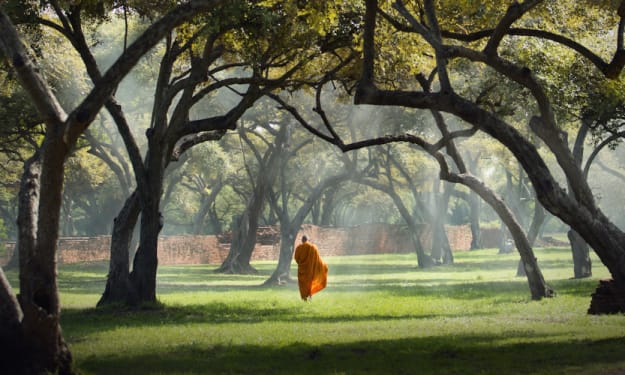
The Taj Mahal, one of the most iconic monuments in the world, stands as a testament to love, architectural brilliance, and cultural heritage. Situated in Agra, India, this majestic structure draws millions of visitors annually, captivating them with its beauty and historical significance.
Historical Background
The Taj Mahal was commissioned in 1631 by the Mughal Emperor Shah Jahan in memory of his beloved wife, Mumtaz Mahal, who died during childbirth. Mumtaz Mahal was not only Shah Jahan's favorite wife but also his trusted confidante and advisor. The grief-stricken emperor vowed to create a monument that would immortalize their love and serve as a symbol of eternal devotion.
Architecture and Design
The architectural masterpiece of the Taj Mahal blends elements from Islamic, Persian, Ottoman Turkish, and Indian architectural styles, creating a harmonious synthesis that is awe-inspiring in its grandeur and symmetry. Designed by the architect Ustad Ahmad Lahauri, the Taj Mahal is renowned for its perfect proportions and intricate craftsmanship.
Main Features:
Main Mausoleum: The central structure of the Taj Mahal is the white marble mausoleum itself, standing on a raised platform and topped with a large dome. The dome is flanked by four smaller domed chattris (pavilions), creating a distinctive silhouette against the sky.
Minarets: Four minarets stand at each corner of the platform surrounding the main mausoleum. These minarets are not just decorative but also serve a practical purpose of providing architectural balance and aesthetic harmony.
Gardens: The Taj Mahal is surrounded by well-manicured gardens divided into four quadrants by water channels, reflecting the Islamic concept of paradise gardens. The gardens are symmetrical and meticulously planned, adding to the overall beauty and tranquility of the monument.
Decorative Elements: The Taj Mahal is adorned with intricate carvings and inlay work using semi-precious stones such as jasper and jade. The marble surfaces are embellished with floral patterns, calligraphy from the Quran, and geometric designs that showcase the skill of the artisans of that era.
Symbolism and Significance
Beyond its architectural splendor, the Taj Mahal holds deep symbolic significance:
Love and Devotion: The Taj Mahal is a symbol of eternal love and devotion, embodying Shah Jahan's profound grief over the loss of his wife and his enduring love for her.
Cultural Heritage: As a UNESCO World Heritage Site since 1983, the Taj Mahal represents not just Indian heritage but is recognized globally as a masterpiece of world architecture and art.
Unity in Diversity: The Taj Mahal's fusion of various architectural styles reflects the diverse cultural influences that shaped the Mughal Empire and India as a whole.
Construction Techniques
Building the Taj Mahal was a monumental feat of engineering and craftsmanship, especially given the tools and technology available in the 17th century. The construction involved:
Marble Quarrying and Transport: The white marble used in the construction of the Taj Mahal was sourced from quarries in Rajasthan, transported over 200 miles to Agra, and then painstakingly carved and polished on site.
Inlay Work: The intricate inlay work known as pietra dura involved setting semi-precious stones into the marble to create decorative motifs and calligraphy.
Architectural Precision: The entire complex was built with remarkable precision, ensuring perfect symmetry and alignment despite the challenges of construction in that era.
Legacy and Influence
The Taj Mahal's influence extends far beyond its physical boundaries:
Architectural Inspiration: Many subsequent monuments and buildings around the world have drawn inspiration from the Taj Mahal's architectural style and aesthetic principles.
Tourism and Economy: The Taj Mahal is a major tourist attraction, contributing significantly to the local and national economy through tourism-related activities and infrastructure.
Cultural Icon: It remains a potent symbol of India's rich cultural heritage and attracts visitors from all corners of the globe who come to marvel at its beauty and learn about its history.
Conservation Efforts
Over the years, the Taj Mahal has faced numerous threats, including environmental pollution, industrial emissions, and the impact of mass tourism. Conservation efforts have been ongoing to preserve its structural integrity and aesthetic appeal:
Cleaning and Restoration: Periodic cleaning and restoration work are carried out to remove pollutants and restore the marble's original luster.
Visitor Management: Measures have been implemented to manage visitor numbers and reduce the environmental impact of tourism on the monument and its surroundings.
Environmental Protection: Efforts are underway to control pollution levels in Agra and the Yamuna River, which flows adjacent to the Taj Mahal, to mitigate damage caused by environmental factors.
Controversies and Debates
Despite its status as a universally admired monument, the Taj Mahal has not been immune to controversies:
Cultural Ownership: Debates have arisen over the cultural ownership of the Taj Mahal, with some questioning its appropriation by global tourism and its significance in contemporary Indian cultural and political discourse.
Political Symbolism: At times, the Taj Mahal has been politicized and used as a symbol in national and regional politics, reflecting its enduring importance as a cultural icon.
Conclusion
The Taj Mahal stands as a timeless testament to love, artistry, and architectural brilliance. Beyond its physical beauty, it embodies the enduring legacy of the Mughal Empire and serves as a symbol of India's rich cultural heritage. As one of the most recognizable landmarks in the world, the Taj Mahal continues to inspire awe and admiration, inviting visitors to contemplate its historical significance and marvel at its timeless beauty.
About the Creator
Ekombe hau
Fictional stories writing and types of good narrative, histories science etc.
content creator in vocal media
lover of music
musical instrument Drummer
Master of psychology and counselling
Enjoyed the story? Support the Creator.
Subscribe for free to receive all their stories in your feed. You could also pledge your support or give them a one-off tip, letting them know you appreciate their work.






Comments
There are no comments for this story
Be the first to respond and start the conversation.